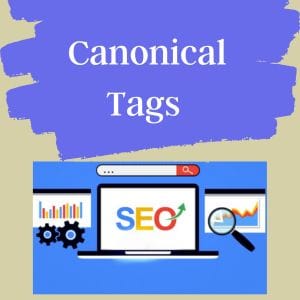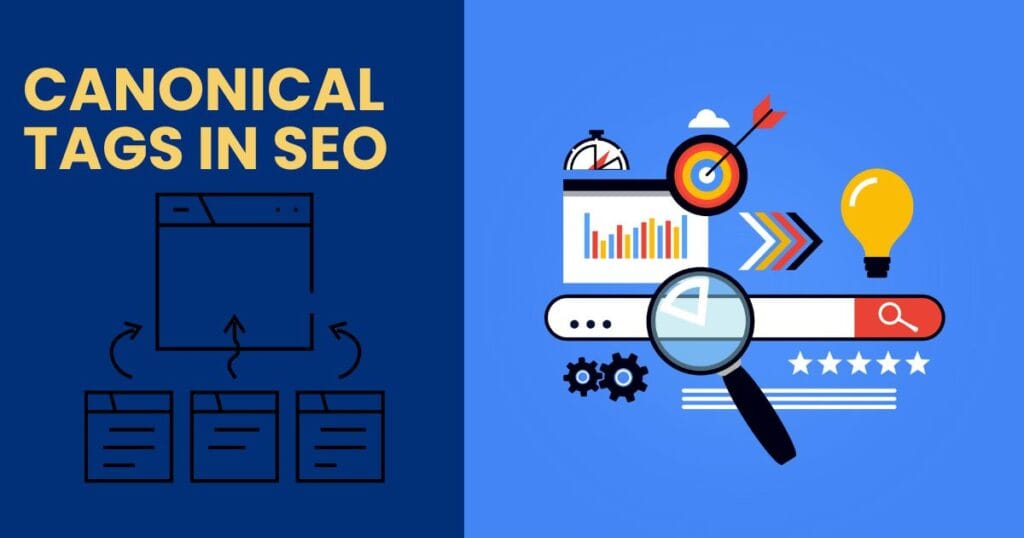Canonical tags are a crucial part of HTML that is used in SEO to show the selected or previous version of the web page .Search engines use the canonical tags to recognize which URL of the page is ranked or index .It help to prevent the duplicate content that has negative impact in ranking .In SEO (Search Engine Optimisation), a canonical URL in SEO is absolutely crucial. They assist search engines in recognizing the best version of a webpage when multiple pages contain the same or similar content. In this piece. We will examine the significance of canonical tags and ways to use them efficiently to improve your website’s SEO effectiveness.
Comprehending Canonical Tags for SEO Purposes
A “rel=canonical” tag, commonly known as a canonical tag, is an HTML component that helps webmasters prevent duplicate content issues by signalling the preferred or canonical version of a webpage. It indicates to search engines which URL should be favoured as the primary source when multiple pages contain similar content.
For example, if your website contains two pages, example.com/page1 and example.com/page1?source=ref. In this way, search engines will be notified of the exact URL that should be included and evaluated.
Why Are Canonical Tags Important?

Prevent Duplicate Content Problems
Canonical tags are mainly utilized to avoid problems related to duplicate content. By implementing canonical tags, you ensure that search engines will solely index the preferred version of your content, preventing any adverse effects on rankings
Combine link value
When several pages contain similar content, the links to these pages are scattered, reducing the ranking potential of every single page. Canonical tags help consolidate link equity, directing all link juice to the desired URL, which improves ranking potential
Enhance Crawl Efficiency
Search engines have a limited number of resources available for crawling and indexing websites. Canonical tags help search engines focus on important pages, improving your site’s crawling efficiency.Leading to a sitemap that is more structured and simpler to handle
How to Implement Canonical Tags
Implementing canonical tags is relatively simple but requires careful attention to details. Here is a comprehensive description of how to complete the task.
Identify Duplicate Content
The first step is to discover pages that have matching or replicated content. These could be product pages with minor variations, blog entries that have been shared again, or pages featuring different URL parameters.
Choose the Preferred URL
After identifying duplicate content, select your desired URL for search engine indexing. This is the official URL.
Add the Canonical Tag to the HTML
HTML markup promotes the Canonical Tag. So this arrangement looks like this.
<link rel=”canonical” href=”https://www.example.com/preferred-page-url” />
Verify Implementation
Once you have implemented the canonical tags, utilize tools such as Google Search Console or external SEO tools to confirm. So the tags are implemented correctly, allowing search engines to identify the preferred version of your pages.
Best Practices for Using Canonical Tags
For optimal benefits of canonical tags in SEO, follow these best practices.

Perfect URLs
Ensure that you always use full URLs in your canonical tags, incorporating the protocol (http or https) along with the complete URL.
Be compatible
Ensure that every variant of a page (like http vs. https, www vs. This consistency helps search engines to understand your preferences more effectively
Avoid Canonical Tags on Non-Canonical Pages
Using self-referencing canonical tags on the primary version of a page is generally acceptable, but avoid applying them on non-canonical versions. Instead, redirect these pages directly to the canonical version.
Handle page number Properly
When managing content spread across several pages, like a collection of blog entries, it is advisable to implement rel=prev and rel=next tags along with canonical tags to help search engines understand the relationship between the pages.
Common Mistakes to Avoid
- Canonical Tags Referring to Non-Existing Pages
- Using Canonical Tags Excessively
- Not Internationalising with Canonical Tags
- Ignoring URL Parameters
The Impact of Canonical Tags on SEO
Properly using canonical tags can significantly enhance your website’s SEO performance. Canonical tags improve search rankings, increase organic traffic, and enhance user experience by eliminating duplicate content and optimizing link equity.
Enhanced Ranking Potential
Canonical tags help channel ranking power to the chosen version and improve its visibility in search results by consolidating duplicate pages.
Bring down Crawl Errors
Canonical tags assist in avoiding duplicate content issues that lead to crawl errors, and improve your website’s visibility in search engines.
Better User Experience
Canonical tags direct users to the preferred version of your pages, promoting a seamless user experience. Improving engagement metrics like time on site and bounce rate.
Conclusion
Canonical tags play an essential role in every SEO strategy, especially for sites with large volumes of content or complex URL configurations. Understanding the definition and purpose of canonical tags, along with their correct implementation, can significantly improve your website’s SEO and overall performance.
Consistently follow suggested practices, avoid common mistakes, and regularly evaluate your website’s performance to ensure your implementation of canonical tags is effective. By taking this step, you will be advancing significantly in mastering the use of canonical tags for SEO.
FAQ’S
What is a Canonical Tag in Search Engine Optimization?
Canonical Tag is the important part of the HTML and helps Google to recognize the version of the webpage .
When to use the Canonical Tags ?
- When you understand that content is duplicate or has a duplicate URL.
- When the URL is different then follow the parameters (?ref=)
- If you have different products with different categories.
Is it permissible for me to establish canonical tags for external websites?
In general no canonical tags always suggest to page with your site without you having few and far between partnerships .
When you don’t use canonical tags what comes up?
When you don’t use canonical it can break your site ranking power and SEO performance because search engine index version of the same .
Do the canonical tags improve the site rankings?
No but firstly, it stops the ranking decrease and helps combine the link value that indirectly boost the SEO performance .

